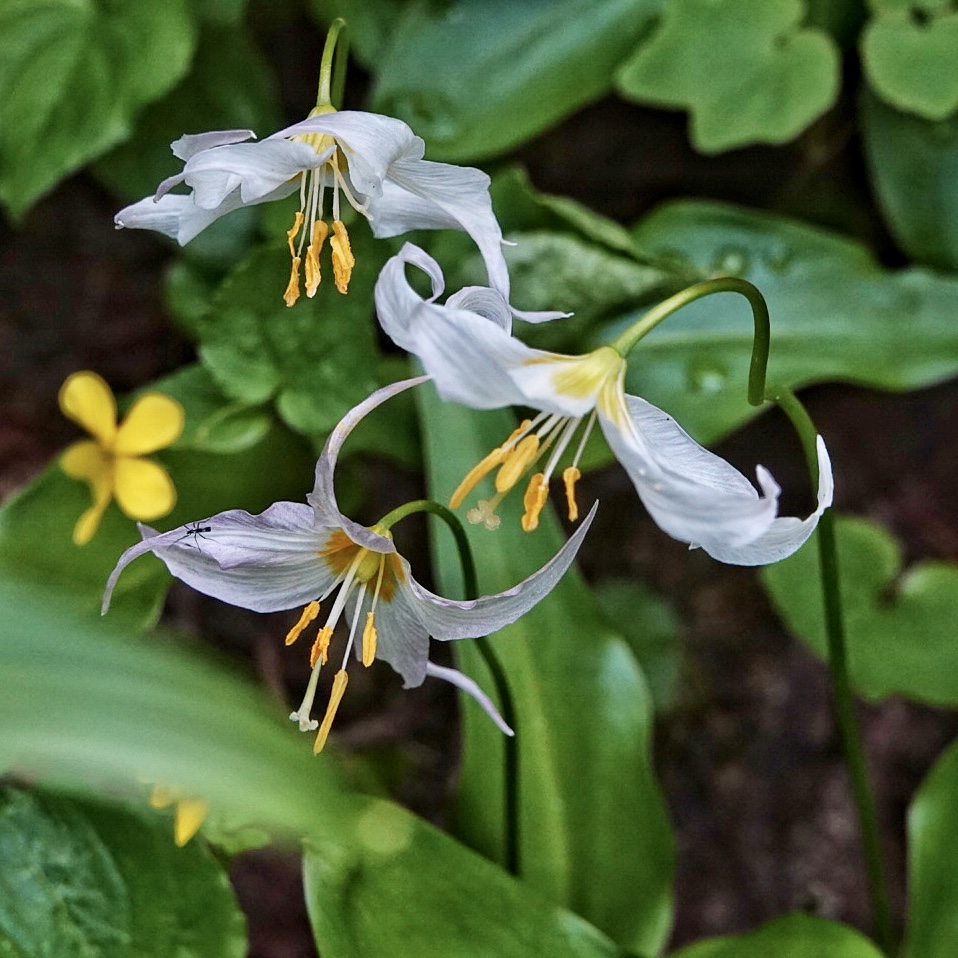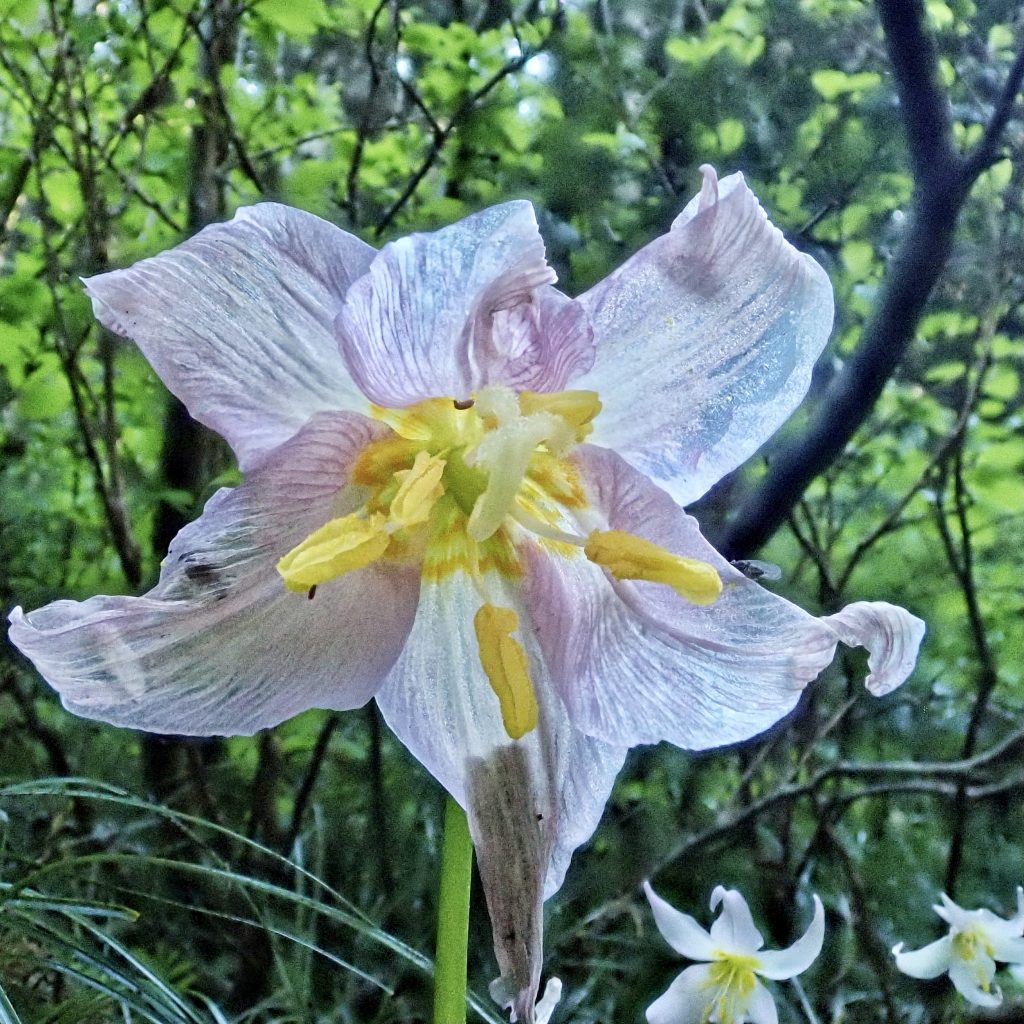
One of the great joys of spring in the western Cascades is finding Avalanche Lilies, sometimes in large aggregations with a profusion of blooms, often beginning right at the edge of the retreating snowpack. Of course spring in the mountains is a fluid designation depending on elevation, but by the 4th of July, when I ventured up to the subalpine area around 4,000’ with Craig and William Sondergaard, most of the Erythronium montanum were done for the year.

But there were still patches of them in shady spots where, presumably, the snow had persisted longer. And the lilies that were still extant were mostly a beautiful shade of pink, a color phase of the flowers that I’d never seen before. Craig and I had to break out the books to confirm what we were finding, where we found that Avalanche Lilies are known to turn pink with age.
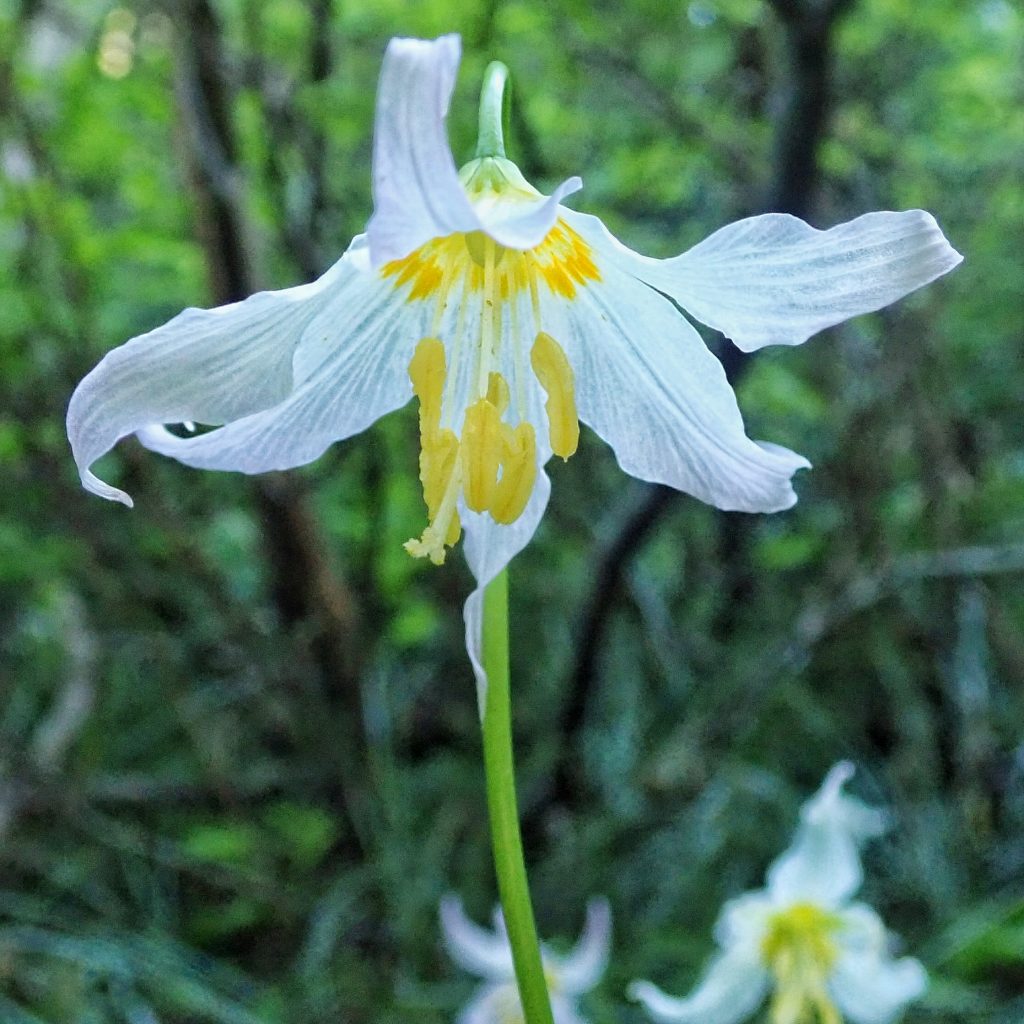
I would assume that indigenous peoples ate the corms, either steamed or roasted, because they do so with many related species. But, oddly I thought for something that I’ve seen growing in masses of hundreds of individuals, I could not find any information on ethnobotany specific to this species. My guess is that indigenous people were lumpers rather than splitters, and viewed the different species of lilies with unmottled leaves as being variations of a single species.

Description– Short (usually less than a foot tall) plant with plain leaves and a white flower on an erect stalk; leaves basal, uniform green (sometimes with a slight blue tint), shiny, usually twice as long (up to 8”) as wide; flowers white with yellow throat, usually nodding, but often perpendicular; stigmas lobed, and filaments very thin (under .8mm wide).
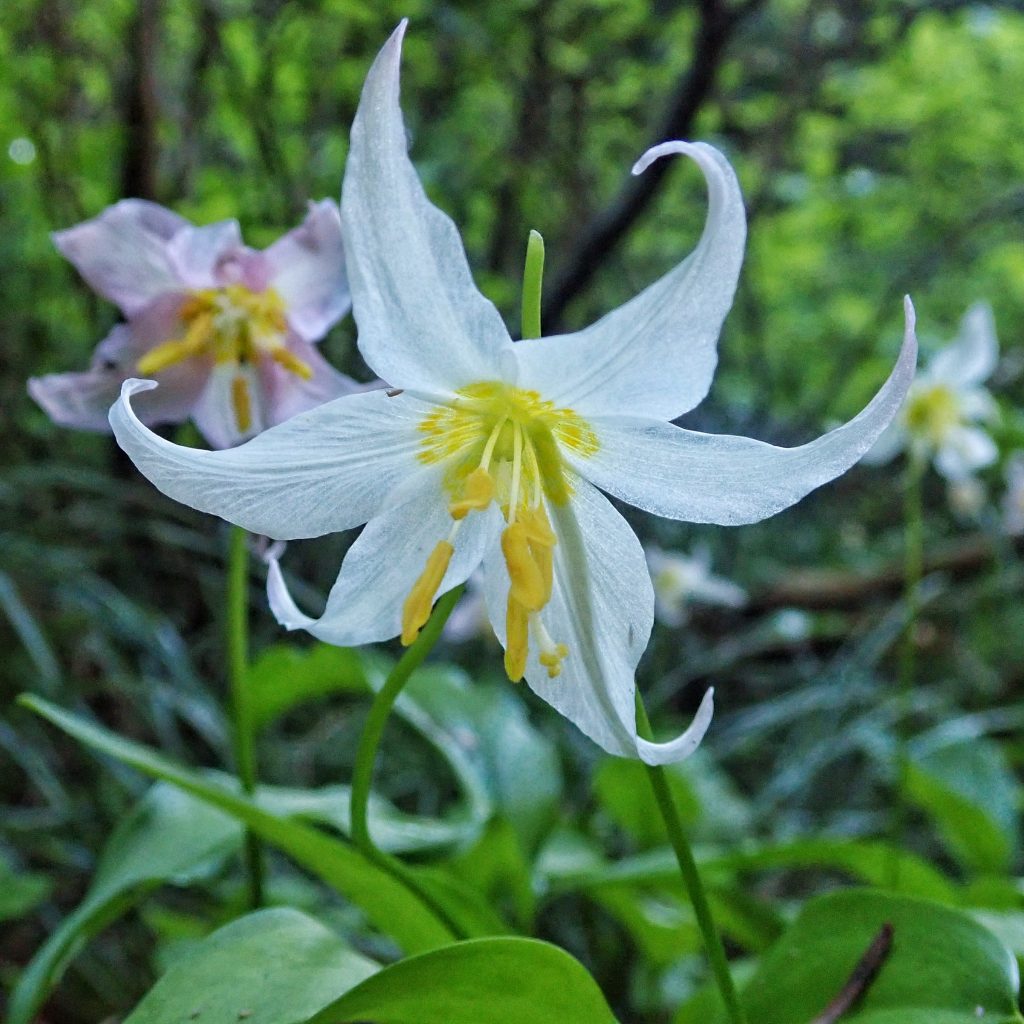
Similar species– E. klamathense has an unlobed stigma, and is only found in sw Oregon/nw California; other white to pale pink Erythronium have mottled leaves, although E. elegans is only faintly mottled, but has filaments over .8mm wide, and is a rare Coast Range species; Erythronium grandiflorum has plain leaves, but has yellow flowers.
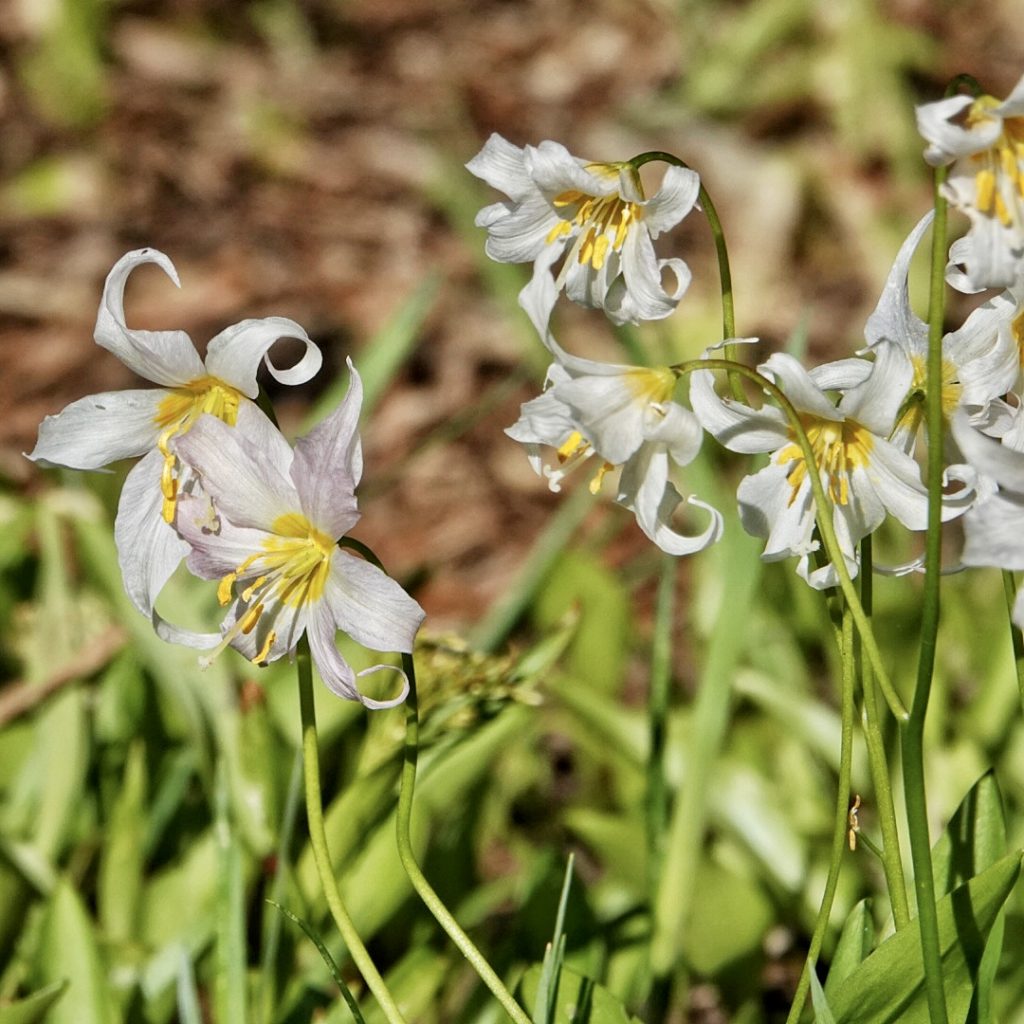
Habitat– Forest openings and meadows from 2,000-6,000’ elevation.
Range-Endemic to the Pacific Northwest; found in the Coast Range and Cascades ( primarily on the west side) north of central Oregon, and in the Olympics.
Reproductive timing– Blooms shortly after snow melt, usually late May to early August, depending on elevation.
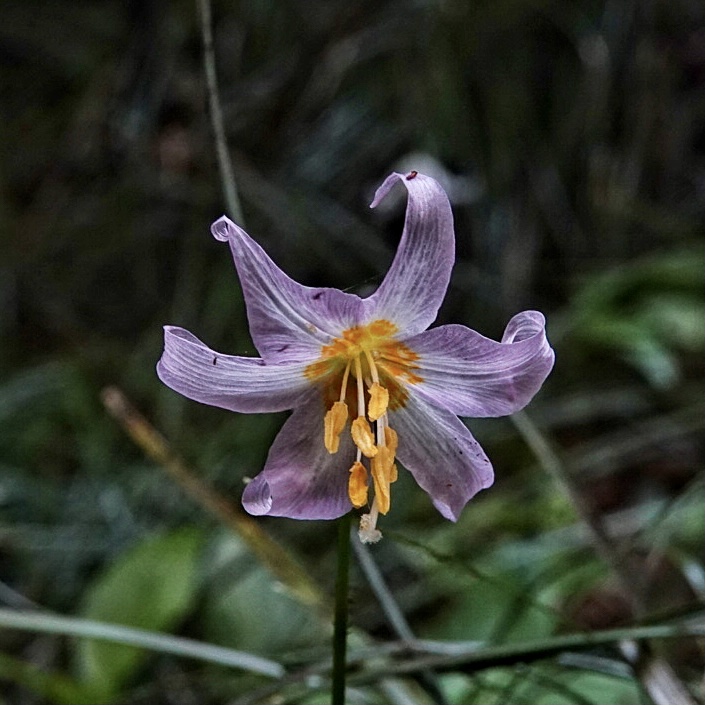
Eaten by-It is possible that bears and rodents eat the corms, and that deer and elk eat the seed pods, since it is known that they do so with the closely related E. grandiflorum, but I can find no documentation of anything, vertebrate or invertebrate, that eats Erythronium montanum.

Etymology of names– Erythronium is from the Greek word for red, and refers to the color of the type species of this genus. The specific epithet montanum is from the Latin for ‘of mountains’ and refers to this species’ preference for montane environments.
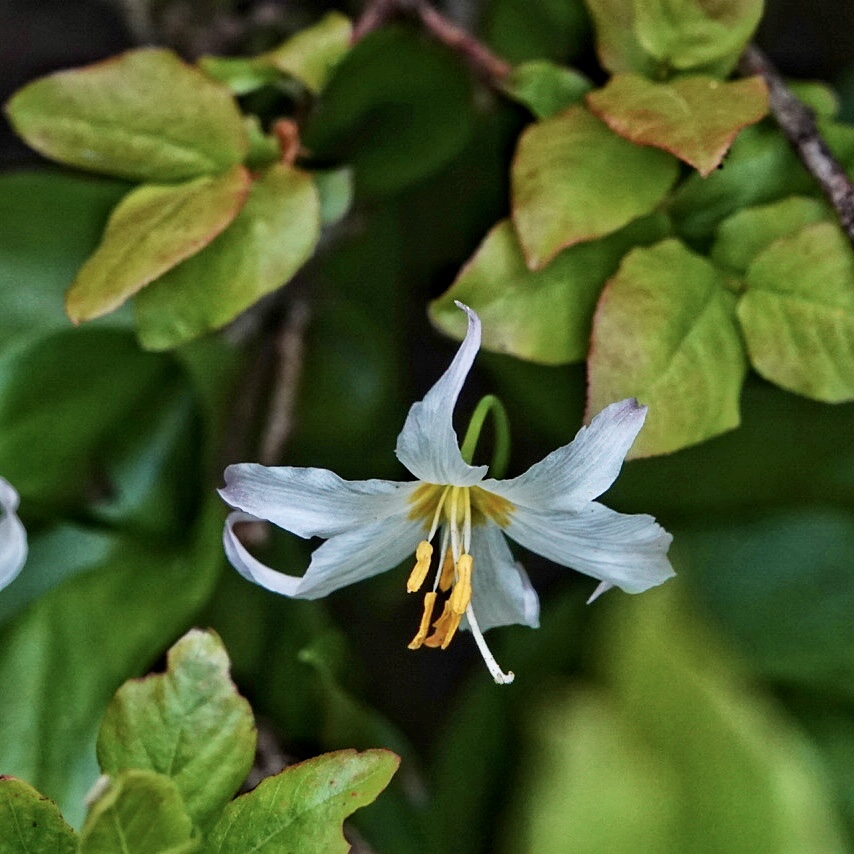
OregonFlora Erythronium montanum
http://biology.burke.washington.edu/herbarium/imagecollection/taxon.php?Taxon=Erythronium%20montanum
https://www.pnwflowers.com/flower/erythronium-montanum
http://www.efloras.org/florataxon.aspx?flora_id=1&taxon_id=242101597
